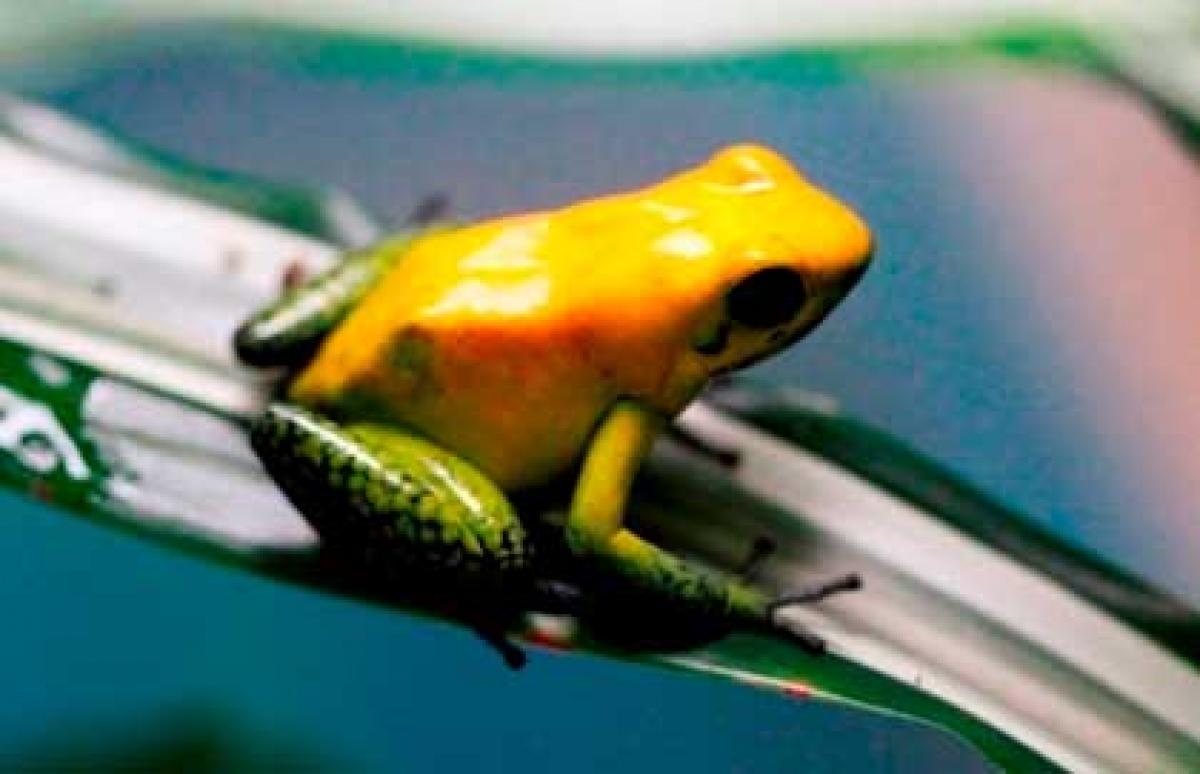Live
- Gurumurthy takes charge as chief of Gowda Corpn
- Study warns: Ultra-processed foods may accelerate biological age
- CM pledges more political opportunities to Madigas
- Year-Ender 2024 Guide: Home remedies to relieve Period Pain.
- All India crafts mela begins today
- TTD gears up for Vaikunta Ekadasi fete
- Vizag attracts tourists as much as Kashmir
- Express Yourself
- Rajadhiraaj: Love. Life. Leela
- Students immerse in nature in Chilkur forest
Just In

A new species of narrow-mouthed frog has just been discovered in the laterite rock formations of India\'s coastal plains and has been named Microhyla laterite after its natural habitat.
A new species of narrow-mouthed frog has just been discovered in the laterite rock formations of India's coastal plains and has been named Microhyla laterite after its natural habitat.
The frog found by the team of researchers from India and the National University of Singapore (NUS) is the size of a thumbnail.
Laterite rock formations are prominent landscape features in the coastal plains of southwest India. They are broadly considered as rocky areas as they are usually devoid of trees and other vegetation, and are therefore classified as wastelands. These areas are often used for dumping activities and are heavily mined for construction materials in the form of bricks.
While conducting field surveys as a part of his citizen science initiative "My laterite, My habitat," one of the authors Mr Ramit Singal spotted the frog in laterite habitats in and around the coastal town of Manipal, Udupi District, Karnataka State, India.
He brought it to the attention of lead author Seshadri K S and his collaborators, who worked together to describe the frog.
The frog, which measures around 1.6 centimetres, is pale brown with prominent black markings on its dorsum, hands, feet and flanks. It has a call that can be easily mistaken for that of a cricket.
Seshadri said that by naming the frog after its habitat, they hope to draw attention to the endangered rock formations that are of ecological importance. M. laterite can potentially be used as a mascot to change peoples' perception about laterite areas.
"One could easily confuse this frog with other species like Microhyla ornata which is thought to occur all over India. However, it was evident from analysing the genes that M. laterite is a distinct species, and is closely related to M. sholigari, which is found only in the Western Ghats," said one of the authors Priti Hebbar. "All three species are small and similar in appearance and only a critical examination would reveal the differences," she added.
Based on preliminary assessments, the research team suggested M. laterite to be classified as Endangered under the guidelines of the Red List by International Union for Conservation of Nature (IUCN), as the geographic range of the frog is narrow, within an area of 150 square kilometres in southwest India.
The study is published in the prestigious journal PLOS ONE.

© 2024 Hyderabad Media House Limited/The Hans India. All rights reserved. Powered by hocalwire.com







